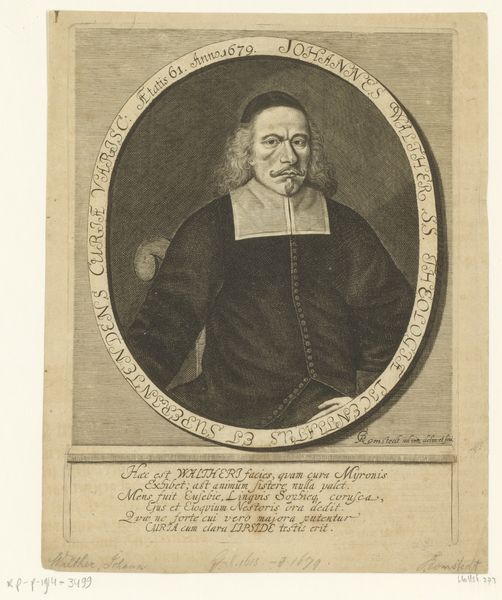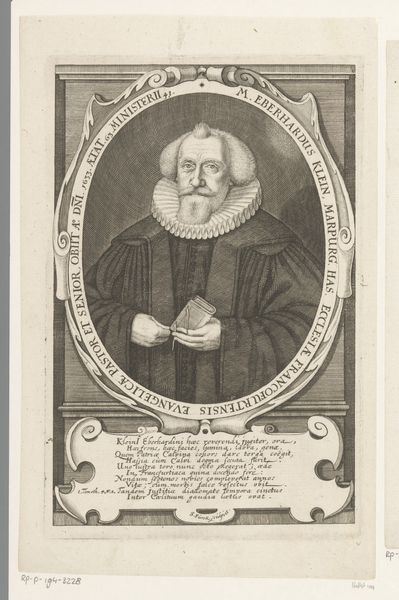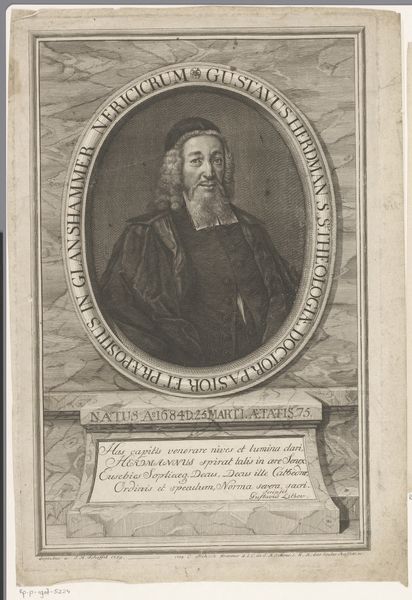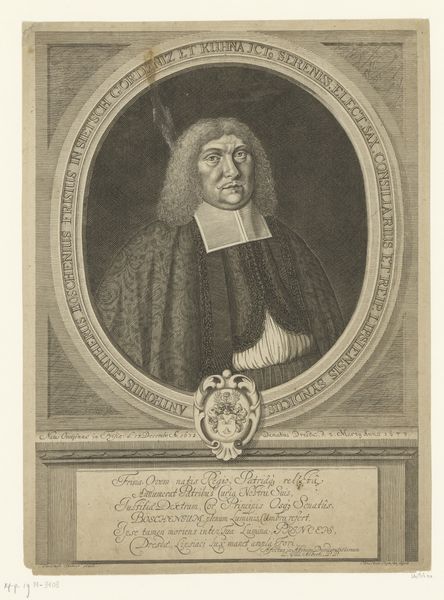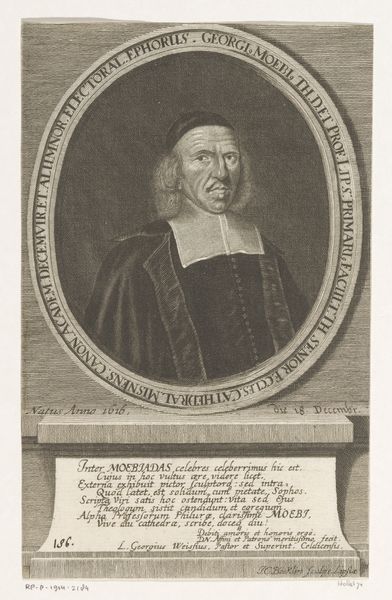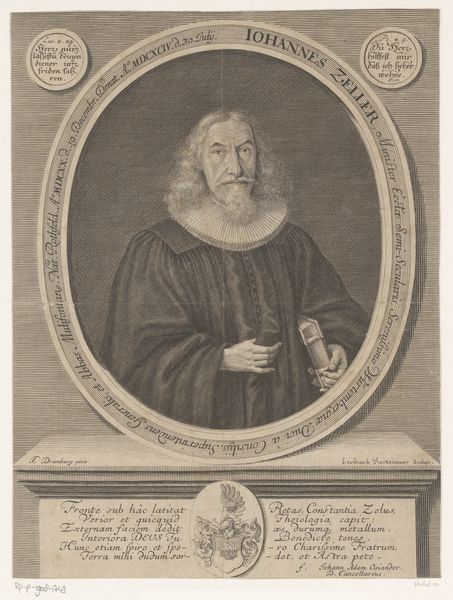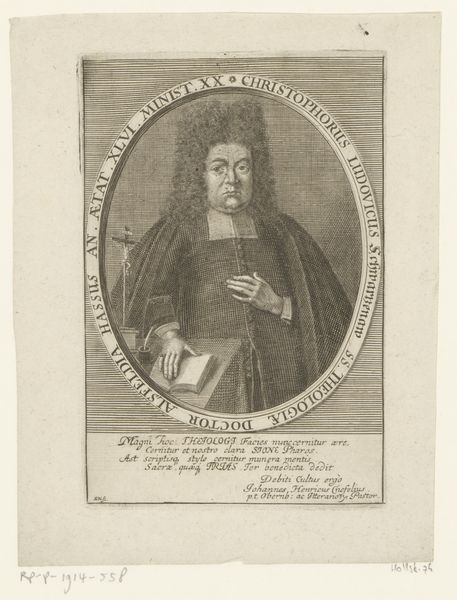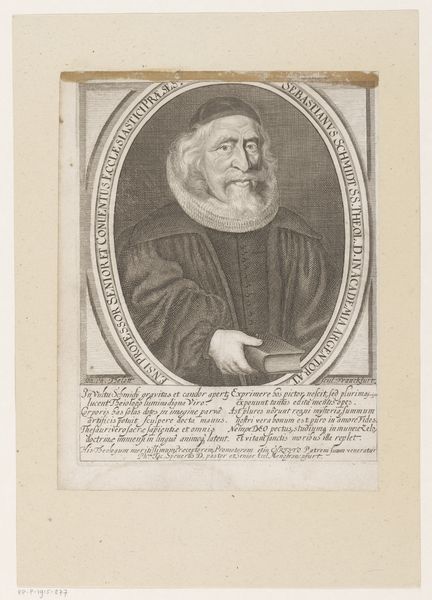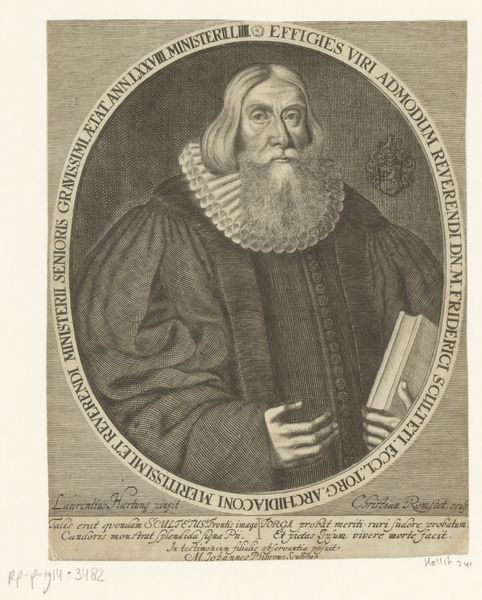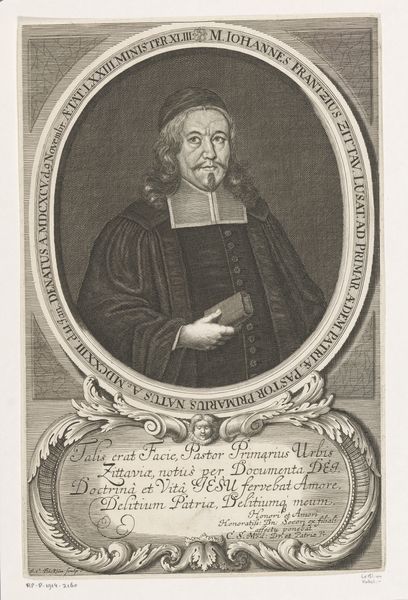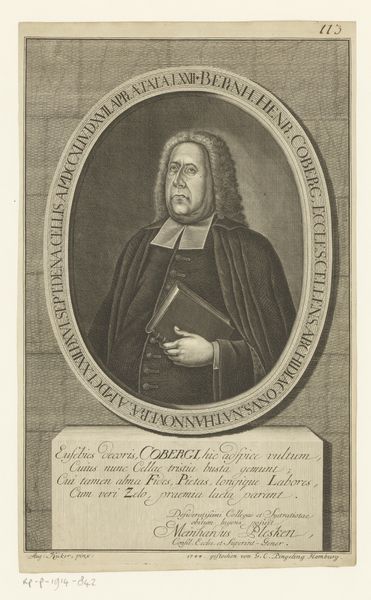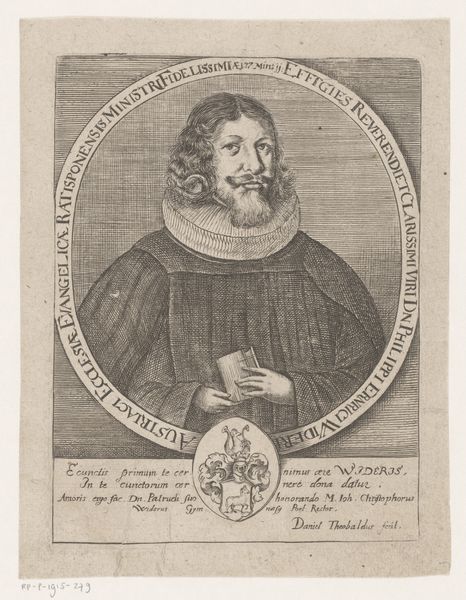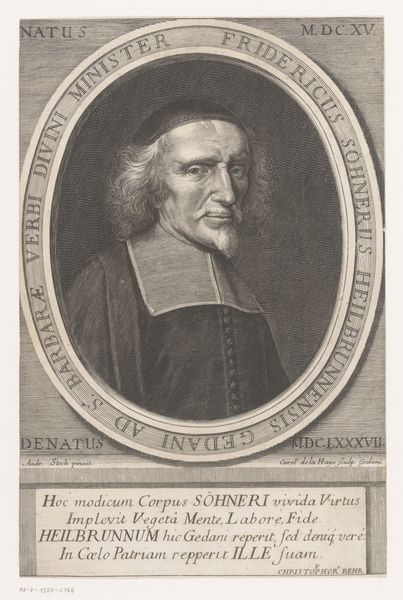
engraving
#
portrait
#
baroque
#
history-painting
#
engraving
Dimensions: height 204 mm, width 147 mm
Copyright: Rijks Museum: Open Domain
Curator: This engraving, "Portret van Lucas Friedrich Reinhard," made sometime between 1688 and 1720 by Johann Alexander Böner, captures Reinhard's likeness. Editor: It’s a very formal portrait, isn't it? The oval frame, the Latin inscription, the sombre attire… What do you see in this piece beyond just a representation of a man? Curator: Well, the piece immediately positions Reinhard within a specific social and intellectual framework. Notice how the text encircling the portrait, along with the inscription below, frames him not merely as an individual, but as a figure of some public significance. Do you see how the text emphasizes his connection to the church and academia? Editor: Yes, the text mentions he was a professor. So, this engraving served a purpose beyond just being a likeness? Curator: Precisely! Prints like these often circulated within academic circles. Consider the function of visual representation in promoting specific ideologies. Böner created this engraving, it's promoting Reinhard and solidifying his image as a learned religious figure within his community and beyond. How do you think this image would have been received? Editor: Given the prominence and the formality, I imagine it was designed to inspire respect, and perhaps even a bit of awe. To almost sanctify him! I hadn’t thought about how something like a portrait could have that kind of public, almost political, role. Curator: It's all about the politics of imagery, and understanding the social and institutional structures surrounding art production and consumption. Editor: So much to unpack! It’s amazing to consider the layers of meaning that are embedded in what initially seems like just a portrait. Curator: Exactly! And that understanding opens up a whole new way of engaging with art of this period.
Comments
No comments
Be the first to comment and join the conversation on the ultimate creative platform.
